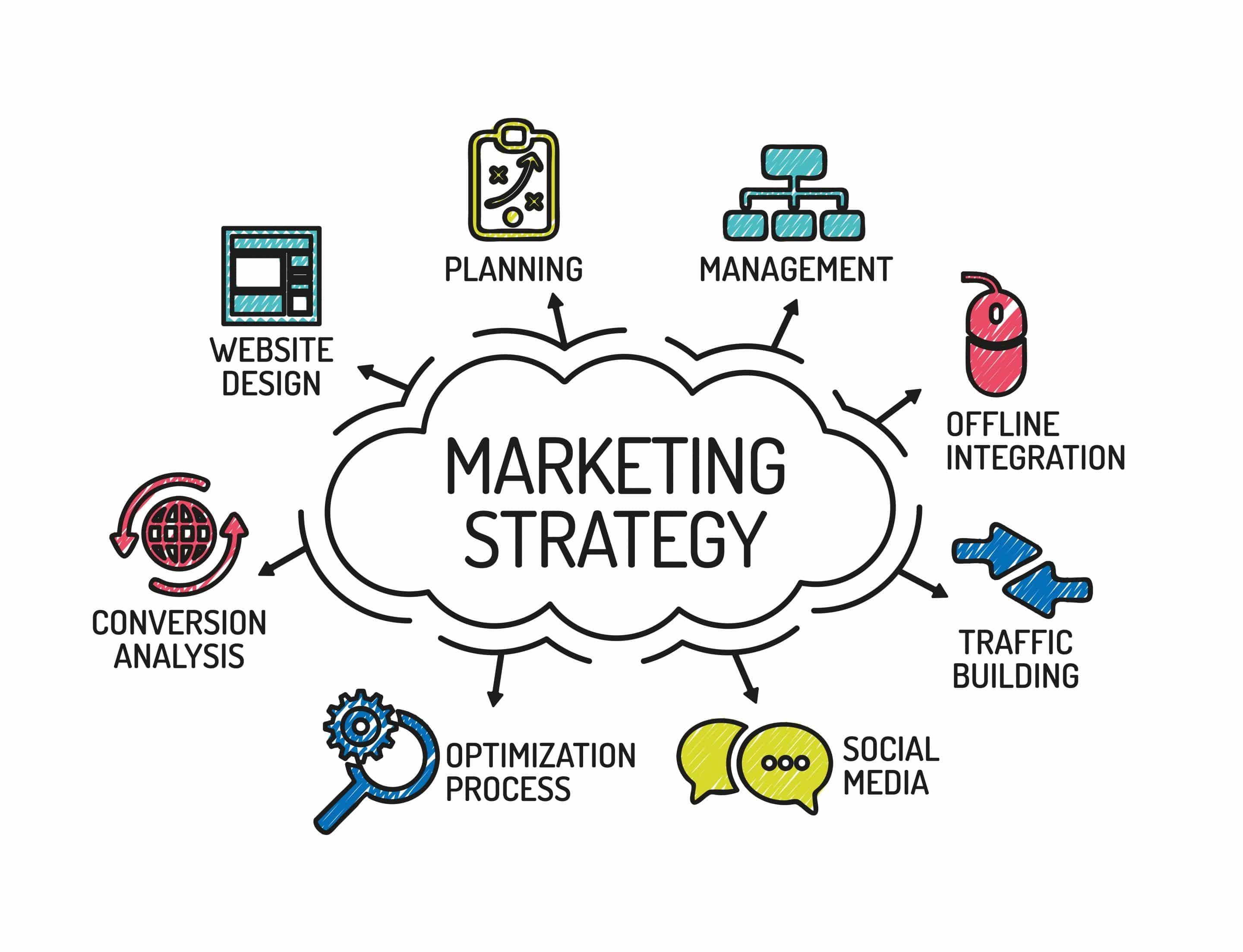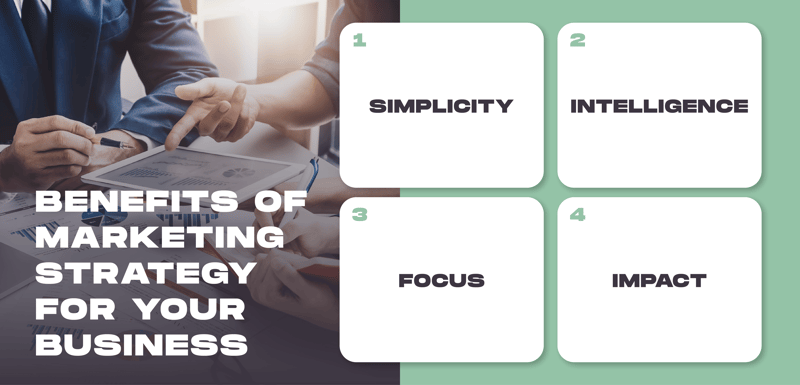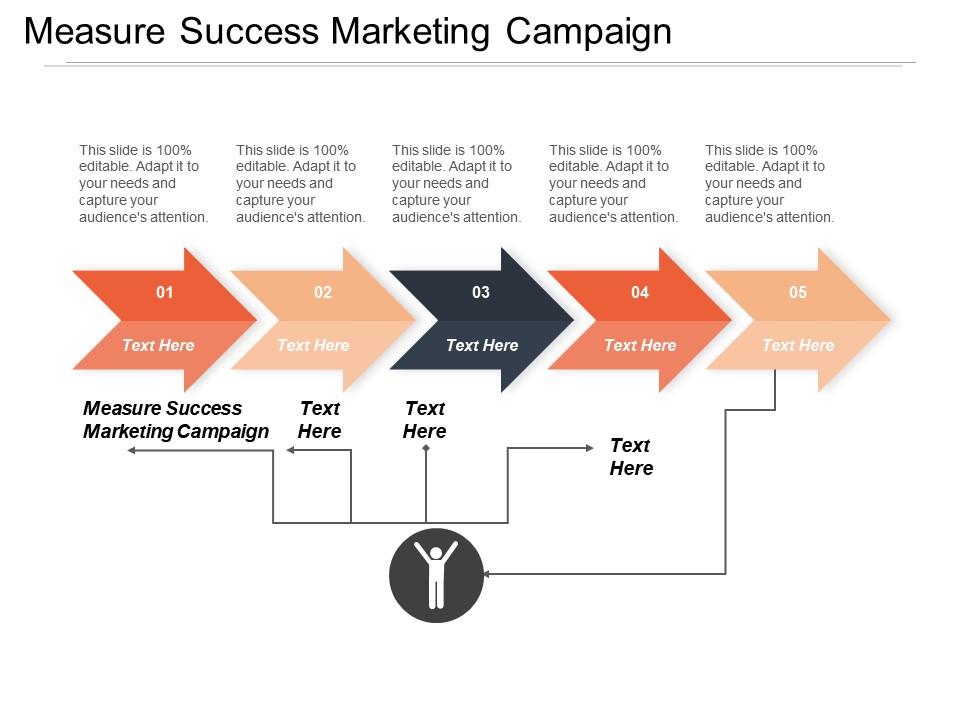Nature Scope And Importance Of Marketing Strategy
What makes some companies stand out in the market, while others struggle to gain traction? The answer lies in the realm of marketing strategy. In this comprehensive guide, we will delve into the nature, scope, and importance of marketing strategy, unraveling the secrets behind successful businesses’ triumphs. From understanding the fundamental principles to exploring the far-reaching impact, this article will equip you with the knowledge to craft powerful marketing strategies that propel your brand to new heights. So, buckle up as we embark on a journey to unravel the essence of marketing strategy and its significance in the competitive business landscape.
Purpose of the Article
The purpose of this article is to provide readers with an in-depth understanding of the nature, scope, and importance of marketing strategy in the contemporary business landscape. By exploring the key components of a marketing strategy and its evolution over time, we aim to showcase how businesses can leverage it to gain a competitive edge.
Throughout this article, we will highlight the significance of tailoring marketing strategies to different business models, be it business-to-consumer (B2C) or business-to-business (B2B). We will also emphasize the benefits of data-driven decision-making and the role of market research in shaping an effective marketing strategy.
Furthermore, we will discuss the steps involved in implementing a successful marketing strategy, from conducting market analysis to measuring performance using key performance indicators (KPIs). By the end of this article, readers will be equipped with valuable insights and actionable tips to create and optimize their marketing strategies for maximum impact and growth.
In conclusion, the following sections of this article will explore the evolution of marketing strategy, its benefits and challenges, and future trends that businesses need to consider in order to stay ahead in the dynamic world of marketing. Whether you are a seasoned marketing professional or a budding entrepreneur, this article is designed to be a valuable resource in enhancing your marketing endeavors and driving your business toward sustainable success.
Understanding Marketing Strategy
In the highly competitive business landscape, having a well-defined marketing strategy is crucial for companies looking to thrive and succeed. A marketing strategy encompasses a series of carefully planned actions designed to promote products or services, engage with target audiences, and ultimately drive sales and revenue. In this section, we will explore the core concept of marketing strategy and its key components, shedding light on how businesses can effectively develop and implement a successful strategy.
The Core Concept of Marketing Strategy
At its essence, a marketing strategy is a comprehensive plan that outlines how a company will achieve its marketing objectives and goals. It involves analyzing market conditions, understanding customer preferences, and crafting a roadmap that aligns with the overall business vision. The core concept of a marketing strategy revolves around identifying the best approaches to attract and retain customers while differentiating the brand from competitors.
What is a Marketing Strategy?

At its core, a marketing strategy can be defined as a comprehensive plan of action designed to promote and sell a product or service. It is a roadmap that outlines the steps and tactics needed to achieve marketing objectives and drive business growth. A well-defined marketing strategy takes into account various factors, such as the target market, competitive landscape, and the unique selling points of the product or service.
A successful marketing strategy is not limited to a single approach; rather, it is a combination of carefully chosen marketing channels and methods that work in synergy to deliver the desired results. From traditional advertising and public relations to digital marketing and social media campaigns, a well-rounded marketing strategy covers all bases to maximize its impact.
Role of Market Research in Developing a Strategy
Market research plays a pivotal role in shaping a robust marketing strategy. It involves gathering and analyzing data about customer preferences, market trends, and industry insights. Market research provides valuable information that guides decision-making and helps fine-tune the strategy for optimal results.
Aligning Marketing Strategy with Business Goals
An effective marketing strategy aligns with the broader business goals and objectives. Whether it’s increasing market share, boosting sales, or launching a new product, the marketing strategy should complement and support the company’s overall vision and mission.
By understanding the core concept and key components of marketing strategy, businesses can create targeted, innovative, and customer-centric plans that deliver tangible results and drive sustainable growth in today’s dynamic marketplace.
Evolution of Marketing Strategy
Marketing strategy has evolved significantly over time, adapting to changing consumer behaviors, technological advancements, and market dynamics. In this section, we will explore the historical overview of marketing strategy, compare traditional and modern marketing approaches, and examine the profound impact of digitalization on shaping contemporary marketing strategies.
Historical Overview of Marketing Strategy
Marketing strategy has a rich history that dates back to ancient times when merchants and traders devised creative methods to promote their products. Over the centuries, marketing practices have evolved in response to economic shifts and societal changes. From the early days of bartering and word-of-mouth promotion to the emergence of print advertising and mass marketing in the industrial era, the evolution of marketing strategy has been marked by innovation and adaptation.
Traditional vs. Modern Marketing Approaches
In this subchapter, we will delve into the differences between traditional and modern marketing approaches. Traditional marketing, characterized by television ads, radio spots, billboards, and direct mail, once dominated the marketing landscape. However, with the advent of the internet and digital technologies, modern marketing has emerged as a game-changer. Modern marketing leverages online platforms, social media, search engines, and data analytics to reach target audiences with greater precision and engagement.
Impact of Digitalization on Marketing Strategy
The digital revolution has reshaped the way businesses approach marketing. This subchapter will highlight the transformative impact of digitalization on marketing strategy and explore the following key aspects:
1. Leveraging Social Media
Social media has become a powerful tool for marketing, allowing businesses to connect with customers directly, build brand awareness, and foster meaningful relationships. We will examine the role of social media platforms in marketing campaigns and the importance of content curation to resonate with the online audience.
2. Influencer Marketing
Influencer marketing has gained momentum in recent years, with social media influencers becoming brand advocates. We will explore how businesses collaborate with influencers to expand their reach, enhance credibility, and tap into niche markets.
3. Content Marketing
Content marketing has become an integral part of modern marketing strategies. This section will discuss the significance of creating valuable and relevant content to attract, engage, and retain customers.
4. Personalization and Customer Experience
The digital era has enabled businesses to deliver personalized experiences to customers. We will explore the role of data-driven insights in tailoring marketing efforts and enhancing the overall customer experience.
Embracing Data-Driven Decision Making
Data analytics has become a cornerstone of modern marketing strategy. This subchapter will highlight the importance of data-driven decision-making, including the use of key performance indicators (KPIs) and customer insights to optimize marketing efforts and allocate resources effectively.
By examining the historical development of marketing strategy, contrasting traditional and modern approaches, and understanding the profound impact of digitalization, businesses can gain valuable insights to craft effective and future-proof marketing strategies that resonate with their target audiences and drive sustainable growth.
Key Components of a Marketing Strategy
A well-structured marketing strategy comprises several vital components, each contributing to the overall success of the plan. Let’s delve into these key components:
1. Target Market Identification
Defining the target market is fundamental in marketing strategy development. This involves segmenting the market based on demographics, psychographics, and behavioral factors. Identifying the specific audience that the product or service caters to allows for a focused and personalized marketing approach.
2. Competitive Analysis
Understanding the competitive landscape is crucial for businesses seeking a competitive advantage. Conducting a thorough competitive analysis helps identify competitors’ strengths, weaknesses, and market positioning. This information informs how a company can differentiate itself and create a unique value proposition.
3. Unique Selling Proposition (USP)
The Unique Selling Proposition (USP) is the distinctive element that sets a product or service apart from its competitors. It highlights the unique benefits and features that address customers’ needs and preferences better than alternatives in the market.
4. Positioning Statement
The positioning statement articulates how a brand wants to be perceived by its target customers. It conveys the brand’s value and relevance, making it clear why customers should choose it over other options.
5. Marketing Mix (4Ps)
The marketing mix, commonly known as the 4Ps – Product, Price, Place, and Promotion – forms the tactical elements of a marketing strategy. This includes decisions about product design, pricing strategy, distribution channels, and promotional activities.
Benefits and Significance of a Strong Marketing Strategy

A well-crafted marketing strategy is a powerful tool that can propel a business toward success and sustainable growth. In this section, we will explore the numerous benefits and the significant impact a strong marketing strategy can have on a company’s overall performance and market positioning.
1. Creating a Competitive Advantage
One of the primary benefits of a robust marketing strategy is the creation of a competitive advantage. By identifying and leveraging unique selling propositions (USPs) that set a product or service apart from competitors, a well-defined marketing strategy allows businesses to establish a strong market position. This competitive advantage enables businesses to attract a larger share of the target market and gain an edge over rival companies.
2. Building Brand Awareness and Equity
A strong marketing strategy plays a vital role in building brand awareness and equity. By consistently promoting the brand message through various marketing channels, businesses can enhance their visibility and familiarity among the target audience. As brand awareness increases, so does brand equity, which is the perceived value and trust that consumers associate with the brand. Higher brand equity translates into customer loyalty and preference for the brand’s offerings.
3. Increasing Customer Engagement and Loyalty
Effective marketing strategies are designed to engage customers and foster long-term relationships. Through personalized and targeted marketing efforts, businesses can connect with their audience on a deeper level, understanding their needs and preferences. By consistently providing value and addressing customer pain points, a strong marketing strategy cultivates loyalty among customers, encouraging repeat purchases and positive word-of-mouth recommendations.
4. Driving Business Growth and Revenue
A well-executed marketing strategy can significantly impact a company’s bottom line by driving business growth and revenue. By attracting new customers and retaining existing ones, businesses can expand their customer base and increase sales. A strong marketing strategy also optimizes customer acquisition costs and maximizes return on investment (ROI) from marketing efforts, leading to higher profitability.
5. Navigating Market Uncertainties and Challenges
In today’s dynamic and competitive marketplace, businesses face various uncertainties and challenges. A strong marketing strategy provides a roadmap to navigate these complexities effectively. With a clear understanding of the target market and the competitive landscape, businesses can adapt and respond swiftly to market shifts and emerging trends. A well-prepared marketing strategy enables businesses to stay agile and resilient in the face of uncertainties.
In conclusion, a strong marketing strategy is an invaluable asset for any business aiming to thrive and succeed in a competitive environment. By creating a competitive advantage, building brand awareness and equity, fostering customer engagement and loyalty, driving business growth and revenue, and navigating market uncertainties and challenges, a well-crafted marketing strategy becomes the cornerstone of a company’s success. With a clear focus on customer needs and strategic planning, businesses can unlock their full potential and achieve long-term prosperity.
Tailoring Marketing Strategy for Different Business Models
In today’s diverse business landscape, it is crucial for companies to tailor their marketing strategies to suit different business models. This section explores the various approaches to marketing for Business-to-Consumer (B2C) and Business-to-Business (B2B) models, taking into account the specific nuances and objectives of each.
1. Business-to-Consumer (B2C) Marketing Strategy
Businesses that cater directly to individual consumers require a unique marketing approach. Here are some key components of an effective B2C marketing strategy:
I. Direct-to-Consumer (D2C) Trends
Direct-to-Consumer (D2C) trends have gained significant traction in recent years, allowing companies to bypass traditional distribution channels and sell directly to consumers. A successful D2C marketing strategy involves creating a compelling online presence, building a user-friendly e-commerce website, and leveraging digital marketing channels to reach and engage consumers directly.
II. E-commerce Marketing Strategies
For businesses operating in the e-commerce space, an effective marketing strategy involves optimizing the online shopping experience, implementing search engine optimization (SEO) techniques to increase visibility in search results, and utilizing pay-per-click (PPC) advertising to attract targeted traffic. Personalization and social media marketing play a crucial role in engaging customers and encouraging repeat purchases.
2. Business-to-Business (B2B) Marketing Strategy
B2B companies focus on selling products or services to other businesses. A successful B2B marketing strategy revolves around building strong relationships and delivering value to business clients. Here are the key elements of a B2B marketing strategy:
I. Account-Based Marketing (ABM) Approach
Account-Based Marketing (ABM) is a highly targeted approach where marketing efforts are directed toward specific key accounts. This strategy involves customizing marketing messages and content to address the unique needs and pain points of individual clients. ABM helps build personalized relationships, fosters trust and increases the likelihood of securing long-term business partnerships.
II. Relationship Building and Networking
Networking and relationship building are integral to B2B marketing. Companies can participate in industry events, conferences, and trade shows to connect with potential clients and industry peers. Content marketing thought leadership, and case studies showcasing successful collaborations can demonstrate expertise and credibility, making businesses more appealing to potential clients.
It is essential for companies to recognize the distinct characteristics of B2C and B2B models and craft marketing strategies accordingly. By understanding the preferences and behaviors of end consumers in the B2C realm and focusing on personalized relationship-building and trust-building in the B2B arena, businesses can optimize their marketing efforts to drive customer acquisition, retention, and growth.
Tailoring marketing strategies to fit different business models ensures that companies effectively reach their target audiences, build brand loyalty, and achieve their business objectives in a competitive marketplace. Embracing the evolving trends in direct-to-consumer approaches and e-commerce marketing for B2C, and adopting an account-based marketing approach and relationship-building strategies for B2B, companies can position themselves for long-term success and sustainable growth.
Implementing an Effective Marketing Strategy
A well-executed marketing strategy is crucial for the success of any business. Here is a step-by-step guide to developing and implementing an effective marketing strategy:
Step-by-Step Guide to Developing a Marketing Strategy
Developing a comprehensive marketing strategy is essential for businesses to achieve their goals and grow in a competitive market. Here’s a step-by-step guide to creating an effective marketing strategy:
1. Market Analysis and Segmentation
Start by conducting a thorough market analysis to understand the industry trends, customer needs, and competitor landscape. Identify your target audience and segment them based on demographics, behavior, and preferences. This will help you tailor your marketing messages to specific customer groups effectively.
2. Setting Measurable Objectives and KPIs
Establish clear and measurable marketing objectives that align with your overall business goals. Whether it’s increasing sales, brand awareness, or customer engagement, ensure that each objective is specific, measurable, achievable, relevant, and time-bound (SMART). Set Key Performance Indicators (KPIs) to track the progress and success of your marketing efforts.
3. Crafting the Strategy and Action Plan
Develop a comprehensive marketing strategy that outlines the tactics and channels you will use to achieve your objectives. Determine which marketing mix (product, price, place, promotion) best suits your target audience and industry. Create a detailed action plan that specifies the tasks, responsibilities, and timelines for each marketing activity.
4. Budget Allocation and Resource Planning
Allocate your marketing budget wisely based on the expected return on investment (ROI) for each tactic. Consider the costs of advertising, digital marketing, content creation, events, and other promotional activities. Ensure that you have the necessary resources, skilled personnel, and tools to execute your marketing plan effectively.
Integrating Online and Offline Marketing Efforts
In today’s digital age, integrating online and offline marketing efforts is crucial for a cohesive and effective marketing strategy. Utilize various online channels such as social media, search engine optimization (SEO), email marketing, and content marketing to reach and engage your target audience. Simultaneously, use traditional marketing methods like print ads, direct mail, and events to create a comprehensive brand presence.
Importance of Flexibility and Adaptability
Marketing strategies should not be set in stone. Markets are dynamic, and consumer behaviors change over time. Stay agile and open to adapting your marketing approach based on real-time data and feedback. Regularly monitor the performance of your marketing efforts and be willing to make adjustments to optimize results.
By following this step-by-step guide, businesses can develop and implement a well-rounded marketing strategy that drives growth, enhances brand reputation, and increases customer loyalty. A data-driven and customer-centric approach, combined with a blend of online and offline marketing efforts, ensures that companies stay competitive in the ever-evolving business landscape. Moreover, the ability to adapt and respond to changing market conditions empowers businesses to make informed decisions and maximize the impact of their marketing efforts.
Measuring the Success of a Marketing Strategy

A well-executed marketing strategy should be measurable to determine its effectiveness and impact on the business. Here are some key steps to measure the success of a marketing strategy:
1. Key Performance Indicators (KPIs) to Track
Key Performance Indicators (KPIs) are essential metrics that businesses use to measure the success and performance of their marketing efforts. When it comes to social media marketing, tracking the right KPIs is crucial to evaluate the effectiveness of your campaigns and make data-driven decisions. Here are some key KPIs to track in social media marketing:
I. Return on Investment (ROI)
ROI is a crucial metric to assess the financial success of your marketing efforts. It calculates the revenue generated from your marketing campaigns relative to the cost of running those campaigns. By comparing the ROI with the marketing budget, you can gauge the profitability and efficiency of each marketing initiative.
II. Customer Acquisition Cost (CAC)
CAC refers to the cost incurred to acquire a new customer. It is calculated by dividing the total marketing expenses by the number of new customers gained during a specific period. Monitoring CAC helps businesses understand how much they need to invest in marketing to acquire new customers and ensure it aligns with the overall marketing objectives.
III. Customer Lifetime Value (CLV)
CLV measures the total value a customer brings to a business over their entire relationship with the company. By understanding CLV, you can determine the long-term profitability of different customer segments and allocate resources accordingly.
IV. Conversion Rates and Sales Funnel Analysis
Track the conversion rates at different stages of the sales funnel to identify areas that need improvement. Analyze data to understand where prospects are dropping off and adjust your marketing strategies to increase conversion rates.
2. Analyzing and Interpreting Data
Collect and analyze data from various sources, such as website analytics, social media metrics, email marketing performance, and sales data. Interpret the data to gain insights into customer behavior, preferences, and engagement with your marketing campaigns.
3. Making Data-Driven Adjustments and Improvements
Use the insights gained from data analysis to make data-driven decisions and adjustments to your marketing strategy. If certain marketing tactics are not delivering the expected results, consider reallocating resources to more effective channels. Continuously iterate and improve your marketing efforts based on real-time data.
Measuring the success of a marketing strategy is essential to ensure that resources are allocated wisely and that the marketing initiatives align with business goals. Key Performance Indicators (KPIs) like ROI, CAC, CLV, and conversion rates provide valuable insights into the performance of marketing campaigns. By analyzing and interpreting data, businesses can identify strengths, weaknesses, and opportunities for improvement. The ability to make data-driven adjustments and improvements ensure that the marketing strategy remains effective and competitive in a dynamic business environment.
Overcoming Common Challenges in Marketing Strategy
Effective marketing strategies require overcoming various challenges to achieve success. Here are some common challenges faced in marketing strategy and ways to address them:
1. Addressing Resource Constraints
Limited resources, such as budget and manpower, can hinder the execution of a comprehensive marketing strategy. To address this challenge:
- Prioritize marketing initiatives: Focus on high-impact activities that align with business goals and target audience preferences.
- Explore cost-effective options: Utilize digital marketing channels, social media, and content marketing, which often offer a higher return on investment compared to traditional advertising.
- Collaborate with partners: Forge strategic partnerships and collaborations with other businesses or influencers to extend reach without significant costs.
2. Adapting to Market Shifts and Trends
Markets are dynamic, and consumer preferences can change rapidly. To adapt to market shifts and trends:
- Monitor industry trends: Stay informed about emerging trends, consumer behavior, and competitors’ activities to identify opportunities and challenges.
- Be agile: Remain flexible and open to adjusting marketing strategies based on real-time data and feedback.
- Conduct regular market research: Continuously study consumer needs and preferences to ensure products and marketing messages stay relevant.
3. Dealing with Competitive Pressures
Competition in the marketplace can be fierce. To stand out and stay ahead:
- Develop a unique value proposition: Clearly communicate the unique benefits of your product or service to differentiate it from competitors.
- Focus on customer experience: Deliver exceptional customer service and experiences to build loyalty and word-of-mouth referrals.
- Benchmark against competitors: Analyze competitors’ marketing strategies and identify gaps or areas for improvement in your own approach.
4. Managing Reputation and Crisis
A negative reputation or handling a crisis poorly can damage a brand’s image. To manage reputation and crisis effectively:
- Build a strong brand identity: Develop a consistent brand image and messaging that resonates with your target audience.
- Be transparent and responsive: Address customer feedback, complaints, and inquiries promptly and transparently.
- Develop a crisis management plan: Be prepared for potential crises and have a clear plan in place to address issues proactively.
5. Ethics and Social Responsibility in Marketing
In an age of heightened social consciousness, ethical marketing and social responsibility are critical. To demonstrate ethical practices:
- Be truthful and authentic: Avoid misleading or deceptive marketing practices and communicate honestly with customers.
- Embrace social responsibility: Engage in socially responsible initiatives and communicate your commitment to sustainability and community welfare.
Overcoming challenges in marketing strategy requires a combination of creativity, adaptability, and strategic planning. By addressing resource constraints, adapting to market shifts, staying competitive, managing reputation, and prioritizing ethics and social responsibility, businesses can navigate the complexities of the marketing landscape successfully. Continuous monitoring and analysis of marketing efforts allow for timely adjustments, ensuring that marketing strategies remain effective and aligned with business objectives.
Future Trends in Marketing Strategy

The field of marketing is constantly evolving, and businesses must stay ahead by adopting innovative strategies. Here are some future trends in marketing strategy:
1. Artificial Intelligence and Automation
Artificial Intelligence (AI) and automation are revolutionizing the marketing landscape. AI-powered tools can analyze vast amounts of data, predict consumer behavior, and optimize marketing campaigns. Automation streamlines repetitive tasks, enabling marketers to focus on creativity and strategy. Some AI and automation applications include:
- Personalized content delivery: AI can analyze user preferences and behavior to deliver tailored content and product recommendations.
- Chatbots and customer service: AI-driven chatbots can provide instant responses to customer queries, enhancing user experience and reducing response times.
- Predictive analytics: AI algorithms can predict customer preferences, allowing marketers to offer relevant products and services proactively.
2. Voice Search and Visual Search Optimization
The rise of voice-activated virtual assistants and visual search technology is changing how consumers discover products. Marketers need to optimize their content for voice search and visual search to stay competitive. Key strategies include:
- Voice search optimization: Tailor content to address voice queries and use long-tail keywords in natural language.
- Visual search optimization: Optimize images with descriptive alt tags and metadata to enhance their visibility in visual search engines.
3. Sustainable and Purpose-Driven Marketing
Consumers are increasingly conscious of environmental and social issues, and they seek out brands that align with their values. Purpose-driven marketing focuses on social responsibility and sustainability. Key considerations include:
- Ethical sourcing: Highlight environmentally-friendly practices and fair trade initiatives in marketing efforts.
- Cause marketing: Partner with non-profit organizations to support social causes and create meaningful campaigns.
4. Hyper-Personalization and Hyper-Targeting
Hyper-personalization involves tailoring marketing messages to individual consumers based on their preferences, behaviors, and demographics. Hyper-targeting goes beyond standard demographics and utilizes data to segment audiences into specific niche groups. Key strategies include:
- Data-driven personalization: Utilize customer data to deliver personalized product recommendations, content, and offers.
- Behavioral targeting: Analyze consumer behavior to predict their preferences and target them with relevant ads and messages.
To stay competitive in the ever-changing marketing landscape, businesses must embrace these future trends. Incorporating AI and automation, optimizing for voice and visual search, adopting purpose-driven marketing, and implementing hyper-personalization and hyper-targeting strategies will enable businesses to connect with consumers on a deeper level and drive success in the future of marketing.
Conclusion
Marketing strategy is the heartbeat of any successful business. From attracting new customers to building a strong brand, its significance cannot be underestimated. Key takeaways include customer acquisition and retention, gaining a competitive edge, revenue generation, and the power of market research. To ensure continuous growth, businesses must embrace innovation, adaptability, and collaboration. By staying open to change and harnessing technology, they can navigate the ever-evolving market landscape and secure a thriving future. Marketing strategy is not a one-time endeavor but a journey of constant improvement and innovation. Keep your eyes on the horizon, and success will be within reach.

